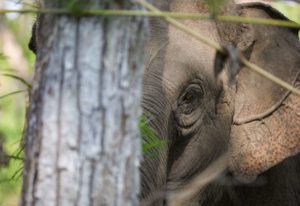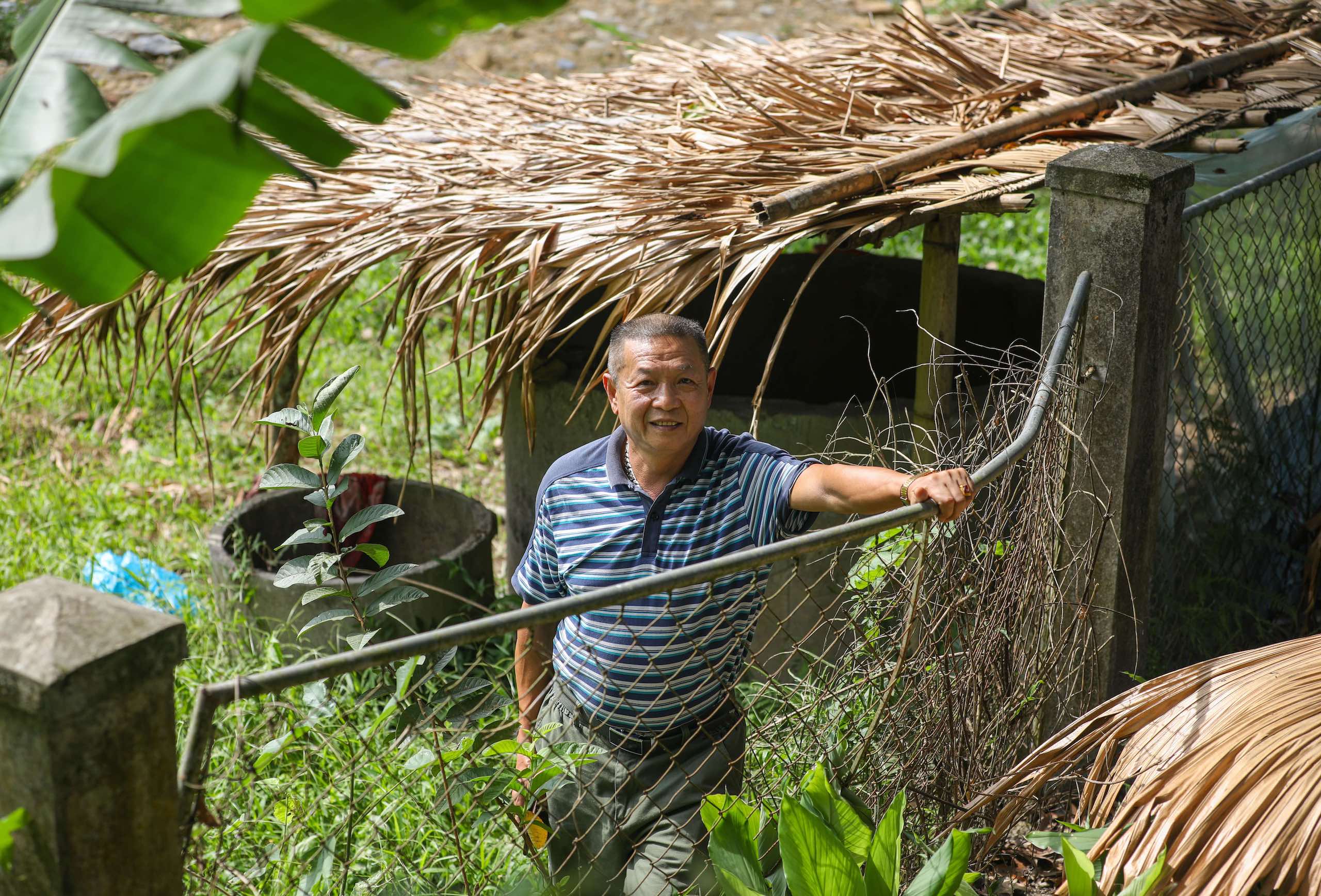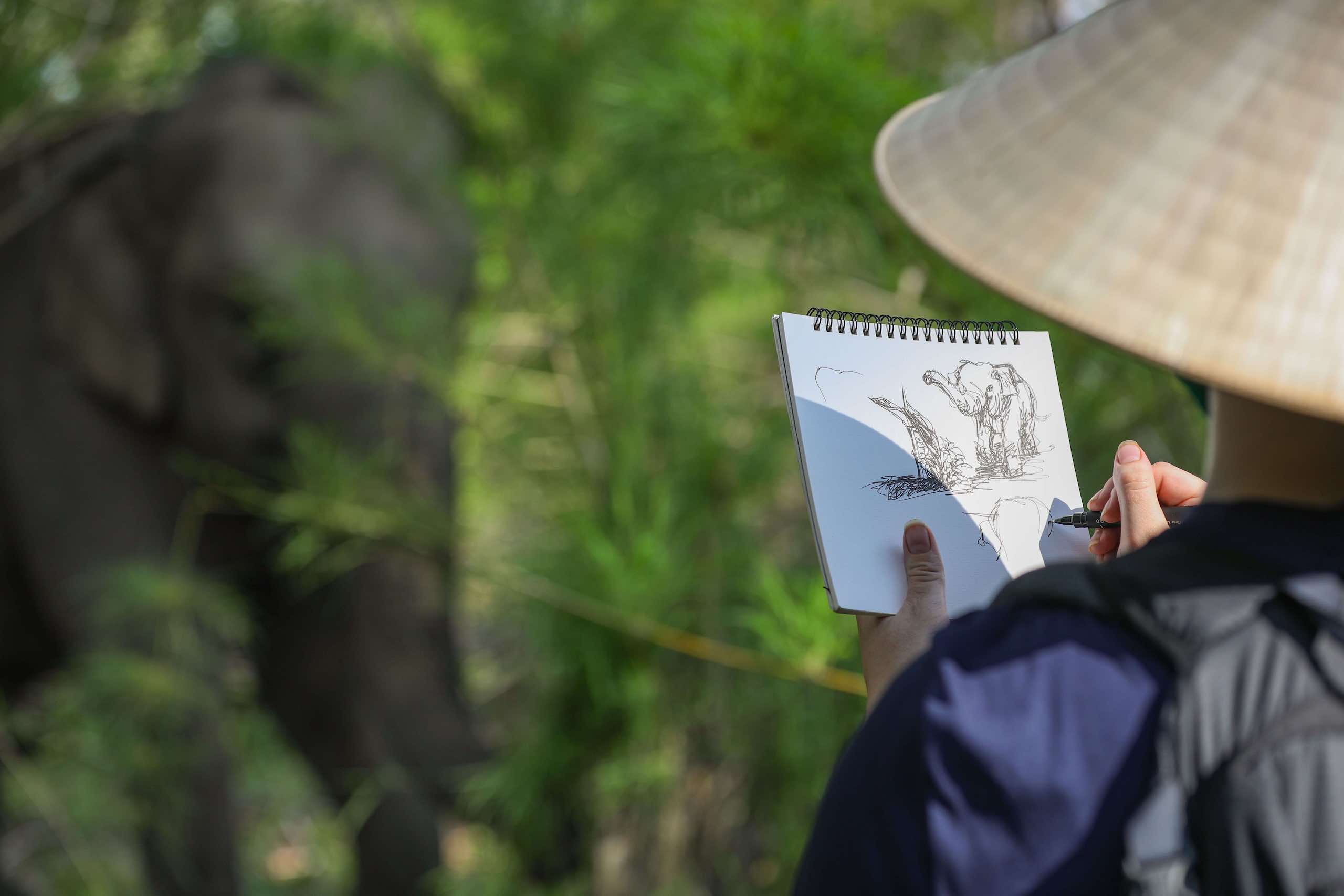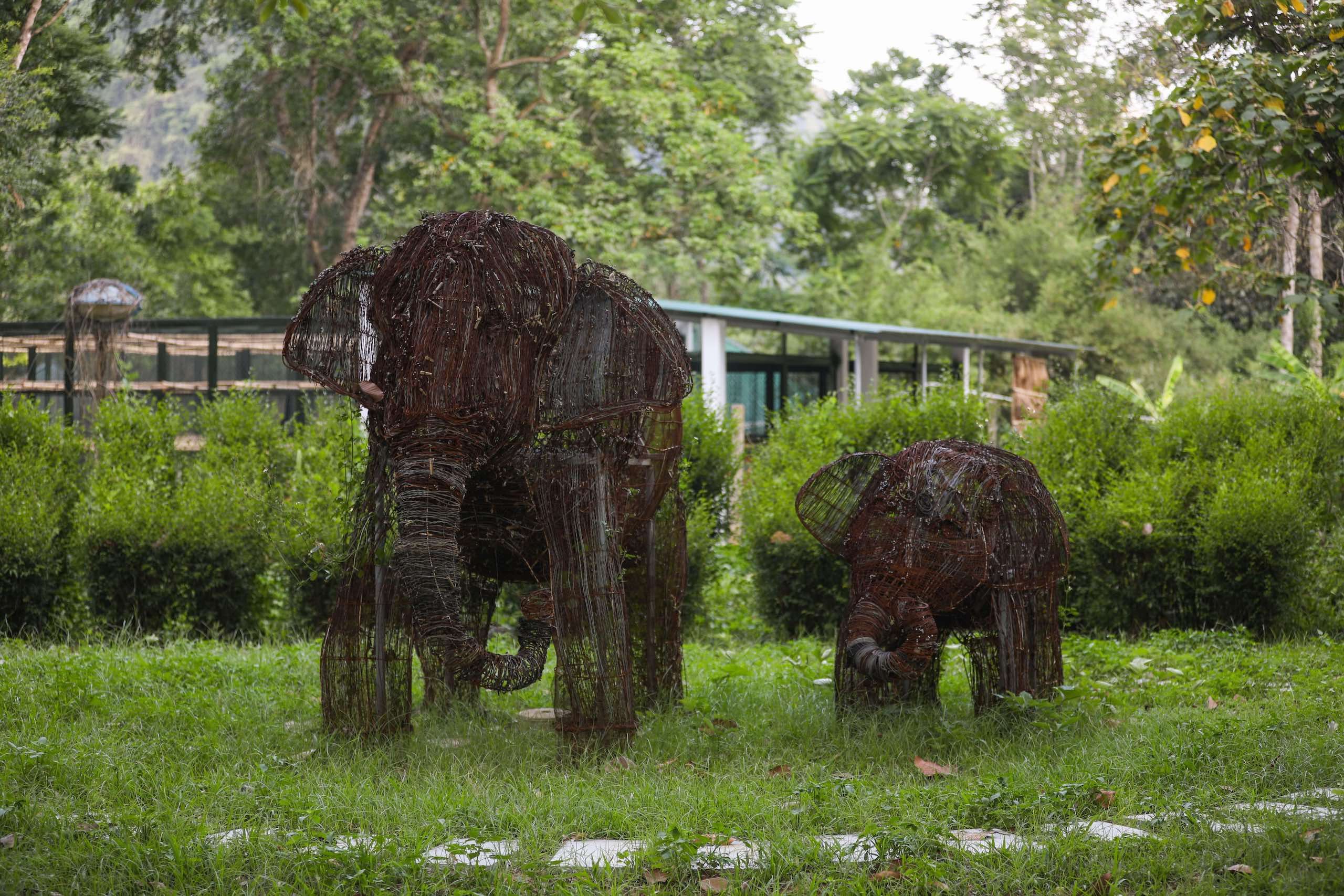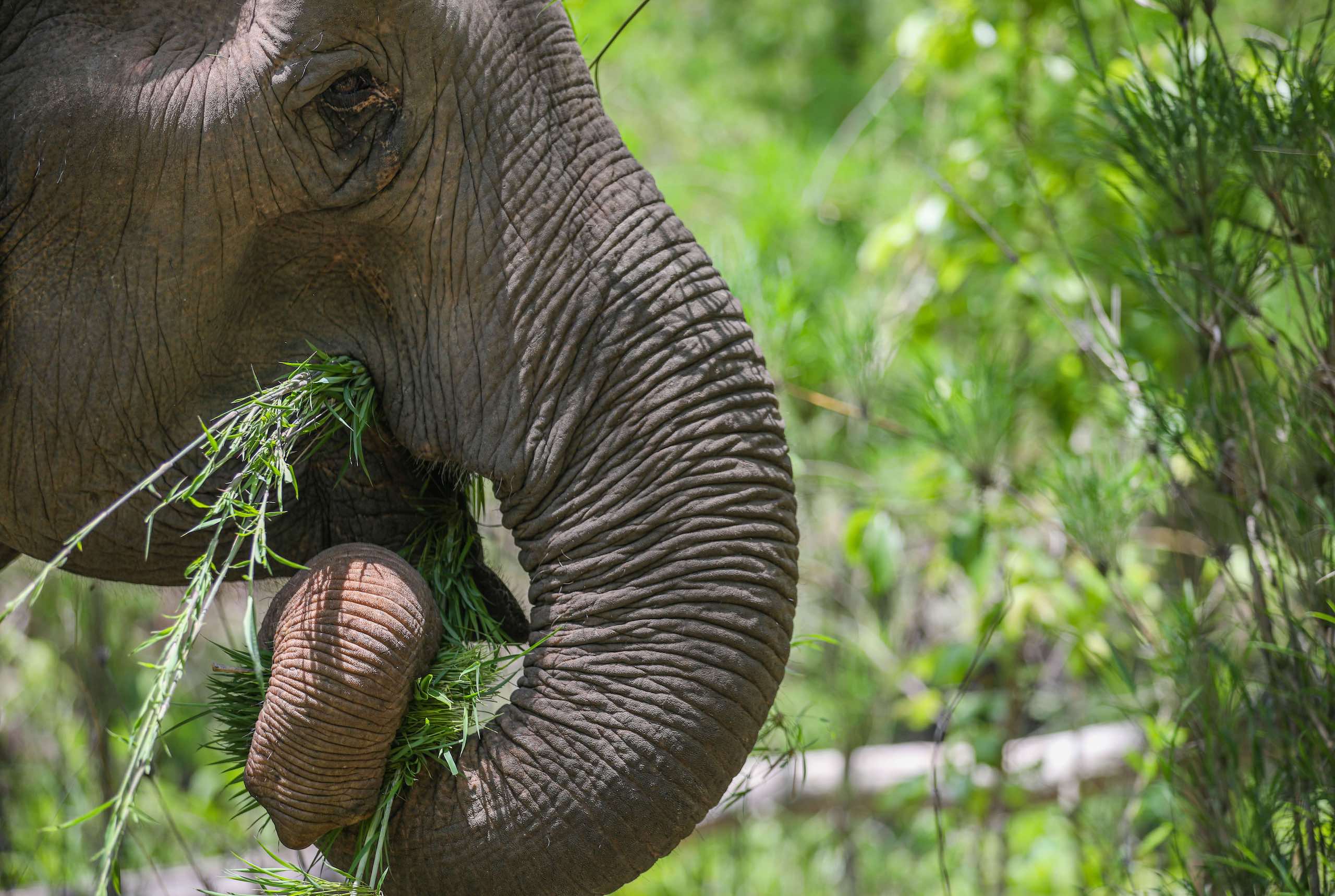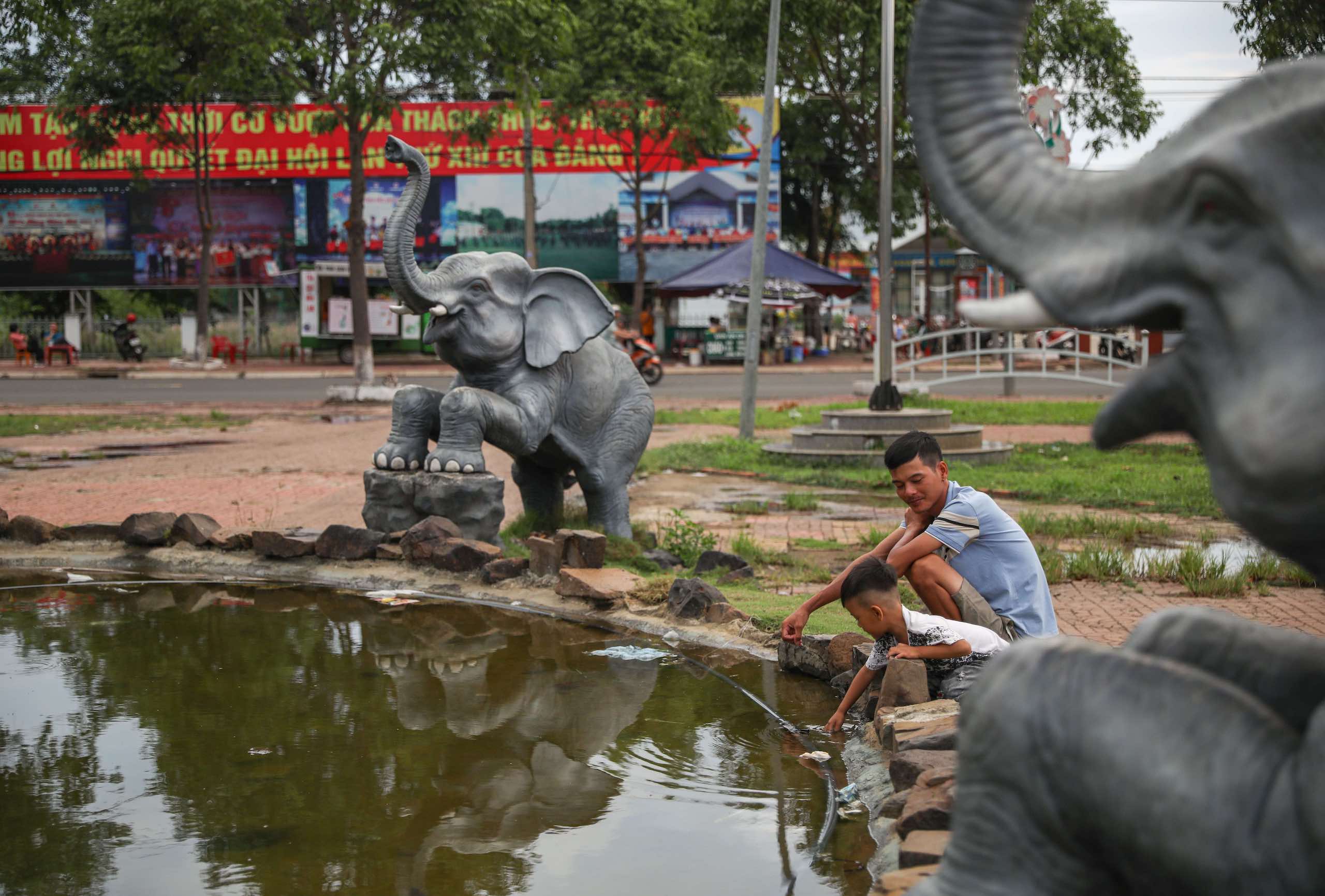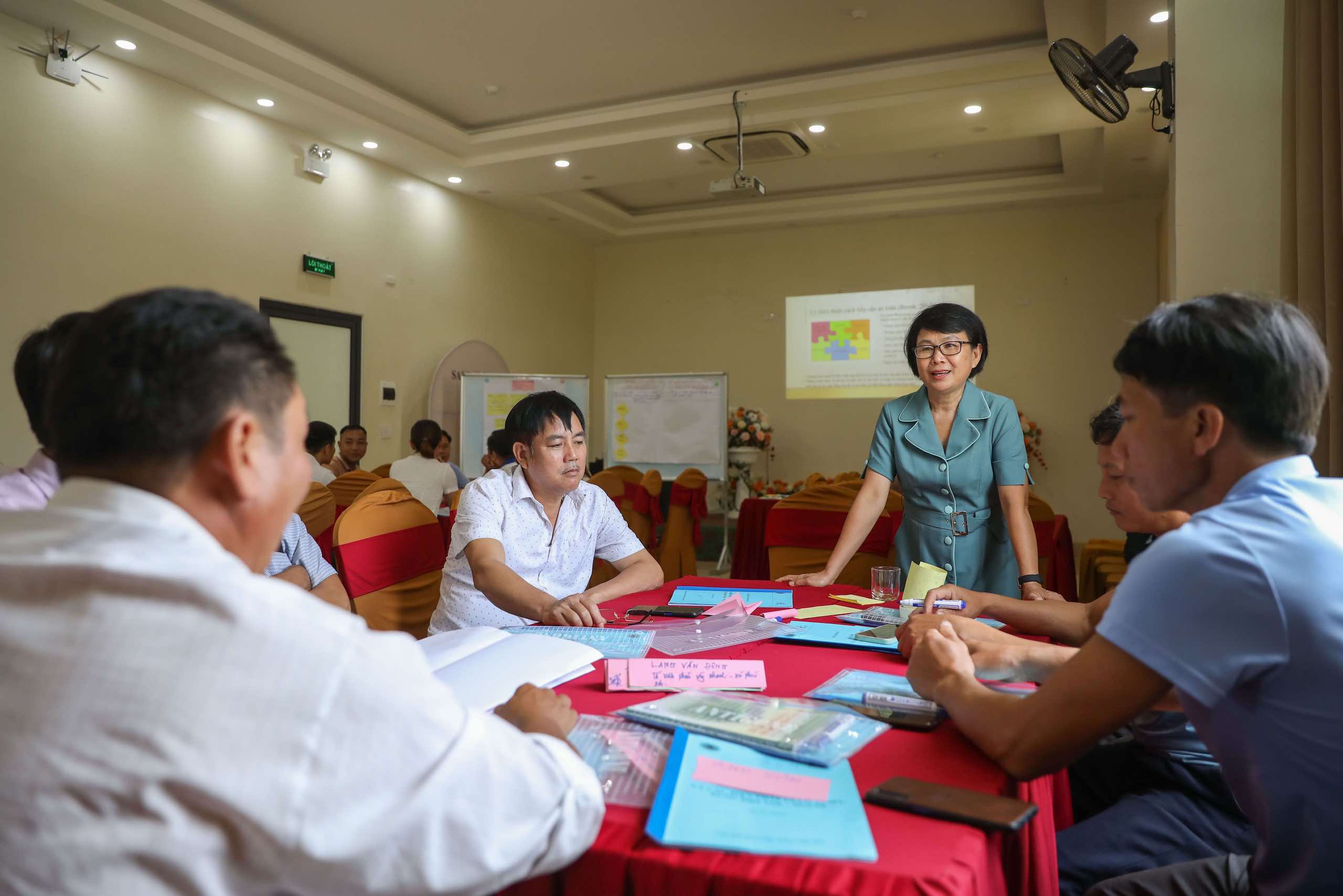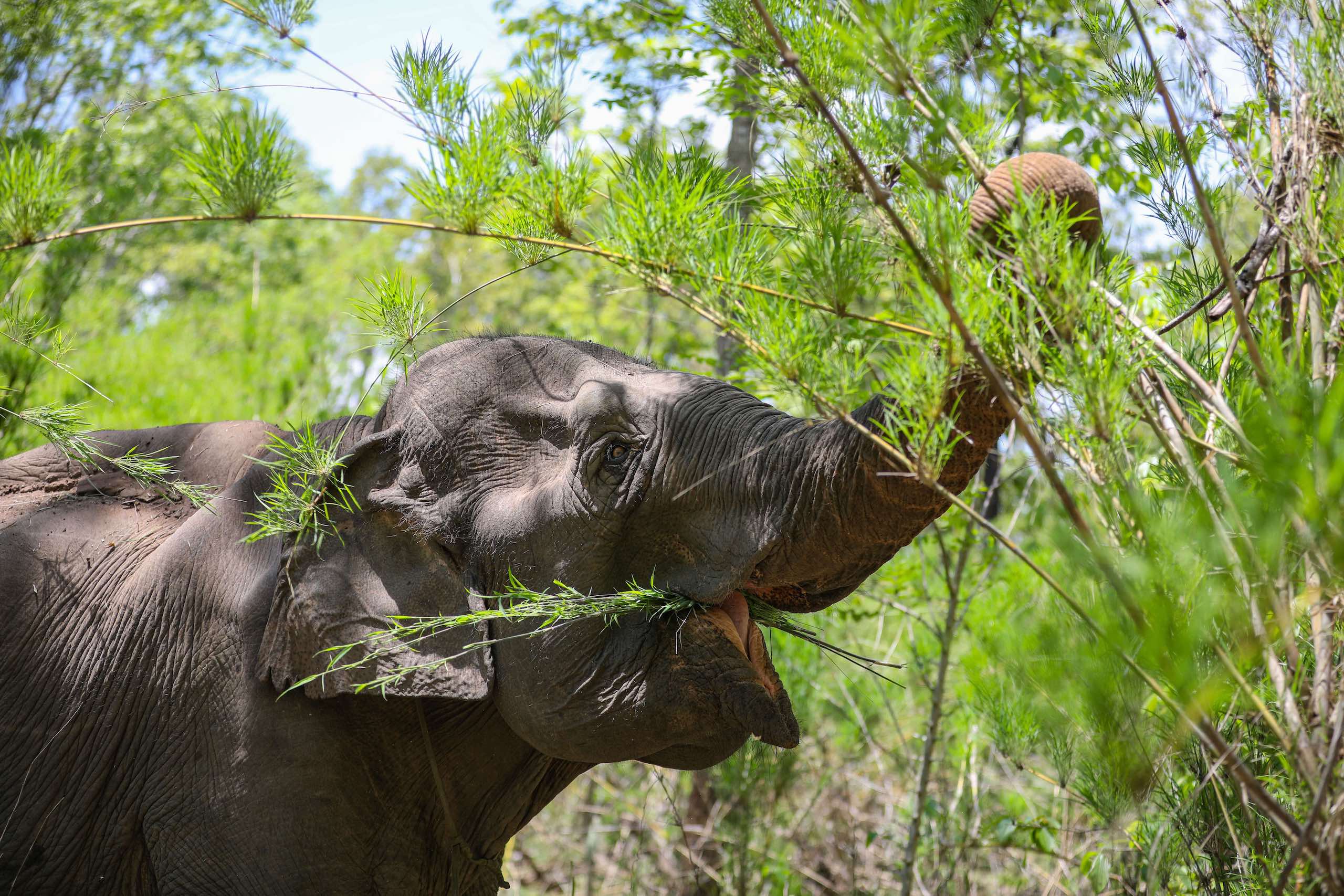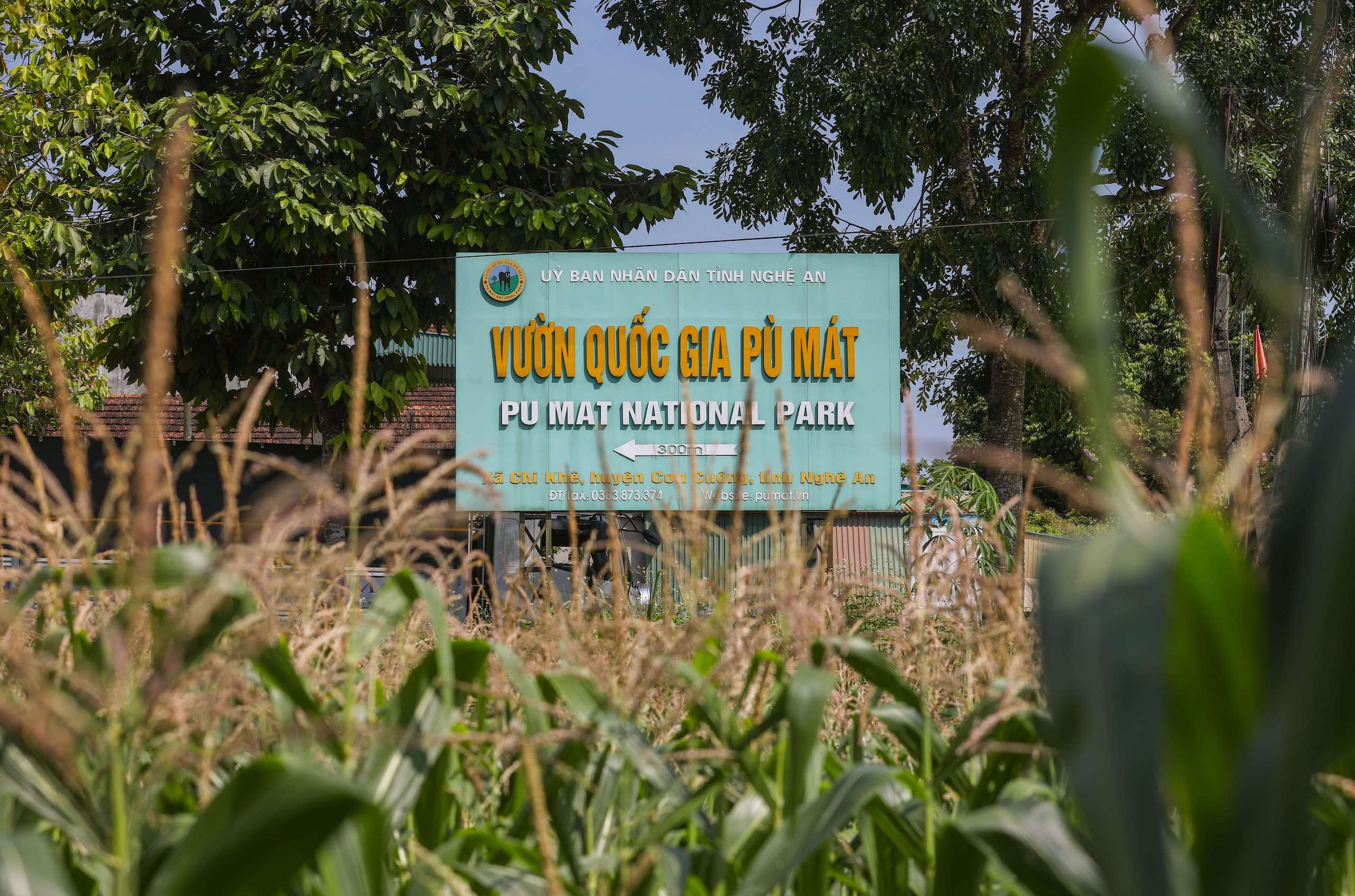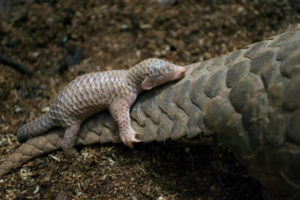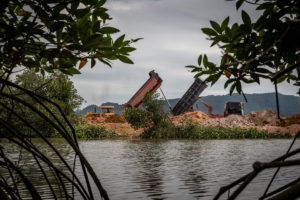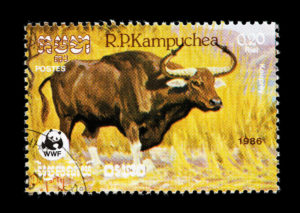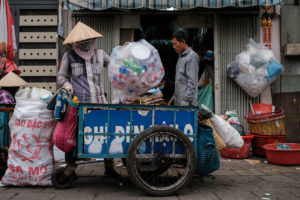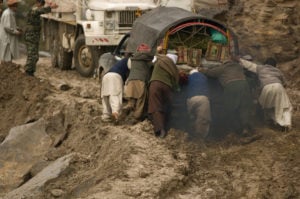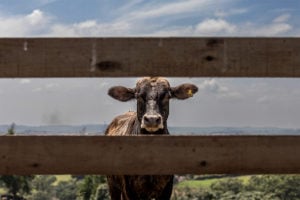A trail of enormous footprints, criss-crossing slabs of cracked concrete, lead to a battered ranger station in Vietnam’s Pu Mat National Park. Park staff say the wild Asian elephant that left the tracks is as friendly as it is lonely.
Separated from any of the country’s remaining wild herds, the solitary giant satisfies her social appetite by interacting with people at the station. Rangers say the 29-year-old female has been solo since her mother died more than a decade ago. Signs of her visits to the rangers are hard to miss, with craters in the soil left by weighty feet, a fence bent from a playful push, and a dented sign toppled by a frisky trunk.
“The elephant usually comes here to play,” says Nguyen Cong Thanh, a ranger at Pu Mat in Vietnam’s north-central Nghe An province, as he points out the damage. The wild elephant herd which lives deeper in the forests of Pu Mat – made up of around 15 individuals – is far less friendly, he says.
Only around 100 wild elephants are estimated to survive in Vietnam, separated into 22 groups across the country. These last survivors of Asia’s once 100,000-strong elephant population face a myriad of threats, including conflict with people, exacerbated by habitat loss.
Drawn to fruit trees, corn, rice and other agricultural produce, a herd of wild elephants can destroy a farmer’s livelihood in a single meal. And when Vietnam’s remaining wild herds interact with humans, the results are often fraught and sometimes fatal.
As pressure mounts from agricultural expansion and other human development, conservationists warn the dwindling number of elephants will soon approach the point of no return in sustaining a viable population.
In the last two years in Pu Mat, rangers allegedly suspect two elephants may have been killed by poisoning in possible acts of retribution following conflicts with humans.
With Vietnam’s elephant populations trailing on the very edge of viability, each incident of conflict threatens the continued existence of the species there.
Vietnam’s elephants on the brink
Asian elephants are listed as critically endangered on the Vietnam Red Book of rare and endangered species, while the International Union for Conservation of Nature’s Red List categorise them as endangered at the global level.
Vietnam’s wild elephant population has been in sharp decline for decades. Huge swathes of forest were destroyed during the 20-year-long Vietnam War, and the animals’ habitat has continued to shrink as the country has developed.
Hunted for ivory and the elephant skin trade, and captured from the wild for use in logging and tourism, Vietnam’s wild elephant population has fallen from approximately 2,000 in 1980 to between 91 to 129 in 2022, according to the Vietnam Forest Administration.
The few surviving wild herds live in areas close to Vietnam’s borders with Cambodia and Laos. The largest groups are in three national parks: Cat Tien, Pu Mat and Yok Don. Even then, Cat Tien and Pu Mat are home to less than 20 elephants, while between 28 and 60 are estimated to live in Yok Don, according to data from the Vietnam Forestry Administration. The rest of the nation’s wild elephants are sparsely scattered across nine provinces, with four provinces counting just a single wild elephant.
The Vietnam Forestry Administration lists Lam Dong province as elephant habitat. However, no data on the number of individuals is included.
A national plan to save elephants
Vietnam is currently crafting a national action plan on elephant conservation to protect the country’s remaining wild herds. This programme will run from 2023 to 2032, and will set a vision to 2050.
Mai Nguyen, wildlife programme manager at Humane Society International (HSI), an animal welfare and conservation NGO, says that national agencies, along with authorities from those provinces where wild elephants cling on, have been meeting with conservation groups in ‘consultation workshops’ and ‘technical meetings’ to develop the action plan.
HSI is leading on writing a draft plan, while also providing technical support and encouraging authorities to find “appropriate interventions” to mitigate conflict between elephants and local communities, Nguyen says. The plan must be signed by Vietnam’s prime minister or the Ministry of Agriculture and Rural Development before it comes into effect.
But reducing human–elephant conflict is complex, and more information is needed to inform responses, Nguyen says. “The conflict is unique and it’s also very complicated. To sort this out is not easy and it takes time… We should keep monitoring and learning about the characteristics of the conflict.”
Retaliation and reconciliation
Some traditional methods used to scare elephants away from crops in Vietnam can be harmful to the animals. While many farmers will bang pots, flash lights, and set off firecrackers, some have also used more violent means.
Locals in Cat Tien have told conservationists about an incident some four years ago in which they threw a Molotov cocktail at a wild male elephant and lit it on fire in an attempt to drive it away. People in the area later reported the elephant is one of the more aggressive animals now.
Conservationists had initially hoped that ‘bio-fences’ such as bee boxes and chilli plants could be used to deter elephants, but these passive interventions have been mainly unsuccessful.
Another potential solution, which some are pushing to be included in the conservation plan, is a countrywide compensation programme for property destroyed by elephants. These initiatives are intended to prevent acts of retaliation against the animals, and though some exist on the local level, there is no such country-wide mechanism.
“We hope some compensation to local people can settle down the conflict and hopefully we can protect the elephants,” said Thong Pham, a research manager with Save Vietnam’s Wildlife.
Nguyen at HSI is working to submit a final draft of the action plan to the government in the hopes of it being signed by the end of this year. “To sort this out is not easy,” she says. “We must represent the elephant voice.”
Training for better responses to human–elephant conflict
In late May 2023, Cao Thi Ly, an elephant expert and retired professor from Tay Nguyen University in Dak Lak, led a training course on mitigating human–elephant conflict. At the event, approximately an hour’s drive from Pu Mat National Park, China Dialogue reporters met with conservationists, rangers, and members of a ‘community quick-response team’ dedicated to mitigating human–wildlife conflict around the park. The training course was arranged by non-profit Fauna & Flora International (FFI), which runs conservation efforts in Pu Mat and backs the response team.
“Out of 13 Asian nations [with extant wild elephant populations], Vietnam is the one with the fewest wild elephants left,” says Ly. “We have to change to help the elephants.”
Habitat destruction has exacerbated human–elephant conflict, says Dang Dinh Lam, a member of the quick-response team.
Rubber plantations and slash-and-burn farming near Pu Mat National Park have shrunk elephant habitat and thus availability of elephant food, Lam says.
“The conflict has two sides. Elephants lack habitat, and because they destroy crops and property, people dislike them,” Lam says. “I hope that the government and people will be more responsible about protecting elephants.”
Engineers of the forest
“When I was young, I could see elephants everywhere,” says Quynh Pham, driving an e-cart into the 115,000-hectare Yok Don National Park in Vietnam’s verdant Central Highlands, which is home to the country’s largest wild elephant population. Pham is the ethical-elephant-tourism manager for Animals Asia, a non-profit working in Vietnam and China to improve the welfare of captive wildlife.
In December 2021, Animals Asia signed a memorandum of understanding with the province of Dak Lak (where Yok Don is located) to end elephant rides completely by 2026 and transition to ethical elephant tourism. As of 2022, there were 37 domesticated or captive elephants in Dak Lak province, and between 28 and 60 in the wild.
Ten animals previously used for elephant rides now live in Yok Don, under the care of Animals Asia. The elephants roam freely in the park during the day, with mahouts travelling with them to ensure their safety; they are kept on long chains in the park overnight. Visiting tourists can watch the animals grazing, bathing, and mud wallowing from a safe distance.
While far from the hundreds of Pham’s youth, the 10 retired elephants can now play their key natural role in the forest ecosystem.
Trampling through the forest, two females graze on bamboo and plough through thick vegetation – a long way from the elephant rides of their past. Wild Asian elephants do this for 18 hours a day, dispersing seeds and creating new forest trails for smaller species as they go. As elephant populations have plummeted across Asia, this important role as an ‘engineer’ has been left unfilled.
Prasop Tipprasert, who has worked in elephant conservation for more than 30 years in Southeast Asia, explains that the presence of elephants in the wild indicates a healthy, biodiverse landscape.
“If we cannot keep elephants from extinction, we lose the potential of keeping our forests healthy,” says Prasop, who now works for the Laos-based eco-tourism agency MandaLao Elephant Conservation.
Ly, the retired professor, says that for elephants to maintain their role as ecosystem engineers in Vietnam’s forests, the country’s government must actively restore and reconnect their habitat to give different populations opportunities to interact and interbreed.
While elephants could once travel through suitable habitat from northern to southern Vietnam, forests have become increasingly fragmented, with conflict with humans becoming “systematic” as forests shrink, Ly says.
“Due to the conflict between humans and elephants over the small leftover shared resources, bad outcomes arise,” she notes. “The confrontation between humans and elephants has intensified.”
Elephants on the brink in neighbouring countries
The decline of elephants in Vietnam is mirrored in neighbouring nations. The wild Asian elephant populations of both Laos and Cambodia are estimated to number less than a thousand. In China, barely 300 wild elephants are believed to survive, with their once enormous range now limited to a pocket of the south-western province of Yunnan.
Conflict over resources is a major concern for China’s remaining wild herds. In 2021, 14 elephants usually resident in a nature reserve in Yunnan’s Xishuangbanna region began to move northwards. On their months-long journey, the elephants destroyed property, creating a challenge for authorities in finding a balance between elephant conservation and protecting citizens’ dwellings and livelihoods. According to local authorities, 150,000 people were evacuated from the elephants’ path to avoid potentially dangerous incidents, and the government paid out a total of US$770,000 in property damages.
***
Sitting just steps from where Pu Mat’s solo female elephant is often spotted, Cao Thi Ly underlines how important habitat protection is if there is to be any chance of saving the last elephants of Vietnam.
“Vietnam is the weakest in everything in elephant conservation,” she says. “We have the chance to help the elephants to keep growing their population in the future, but we need to rebuild forests.”
This story was produced in collaboration with the Southeast Asia Globe. Additional reporting by Nguyen Hao Thanh Thao.
